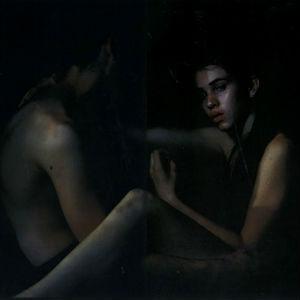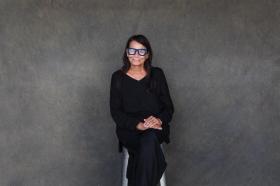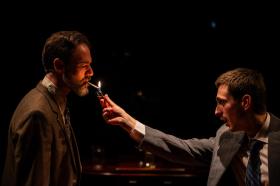Anyone with a teenager in the house knows they are sexualised beings. The development of an ambiguous potency that hovers on the edge of full sexuality is as much a reality of adolescence as hair growth and body odour.
What makes adolescents interesting is that they exist in a liminal state, neither wholly children nor fully adults. The same quality can be what makes art interesting.
Art exists to explore and thereby cast light on the world around us. So of course some of the best art makes us uncomfortable. In fact if you are wondering whether Bill Henson’s luminous pictures of young bodies constitute pornography, that sense of doubt probably proves you are looking at art.
The sensations pornography wants you to feel do not include uncertainty. Art, on the other hand, thrives in grey spaces. John Brack’s classic Australian painting Collins St, 5pm forces us to contemplate what own daily commute is doing to us. It challenges our sense of individuality by showing us the insistence of the crowd.
Patricia Piccinini’s disturbing hybrid sculptures demand that we question the limits of our humanity and the ethical dilemmas presented to us by biotechnologies such as cloning and gene therapy.
And photographer Bill Henson casts light – literal and figurative – on the ambivalent bodies of teenagers.
It’s not particularly comfortable to look at these artworks. Collins St, 5pm is depressing. Sculptures such as Piccini’s Undivided, which shows a grotesque hybrid snuggling a small child, are at once endearing and disturbing.
But art tells truths. It makes us think and feel and we don’t do either of those well when we are too comfortable.
Henson makes many viewers uncomfortable because he makes us sit in an ambiguous place, looking at beautiful naked forms that are neither blatantly sexy nor clearly innocent children. He photographs the truth about bodies on the cusp of sexual maturity and we look askance, not because he is doing something wrong but because we know he is right about our kids.
The ambiguity of the maturing body is a valid and interesting subject for an artist that has always drawn Henson. “I think that the period between … childhood and adolescence or, you know adolescence in itself is … a really interesting period, it’s a bridge between the world of childhood and the adult world. That thing of having one foot in the world of childhood and one foot in the adult world produces a certain uneasiness, a certain disposition, which I find really interesting,’ he told an ABC documentary 10 years ago, long before the furore that brought his work to the attention of people who don’t spend much time in art galleries.
That’s not just a snide comment from someone who loves art. Context is part of what makes art. The surrealist Marcel Duchamp taught us that back in 1917 when he took a urinal and sent it to the Society of Independent Artists labelled Fountain.
Art – like prayer or yoga – creates a psychological space to enable us to contemplate the world in a different way. Of course, not everybody finds solace or enlightenment in these spaces: the impact for any individual will always depend on what we bring to the encounter. But our society is enriched by those who help us see differently and Henson’s deserves our gratitude not our derision for giving us a powerful lens.
Henson’s nudes are beautiful. Young and healthy, enhanced by artful lighting and an artist’s eye, they are compelling even when they are unsettling.
This is as it should be. Young people in the first flush of fertility are magnificent creatures. Biology makes them so. Indeed our continuation as a species demands it.
The first beautiful nude in art is general considered to be the Kritios boy, an ancient Greek sculpture of a young man similar in age and shape to the 16-year-old Henson model photographed on the invitation to his new exhibition. Young models have always been the choice of artists seeking to capture a beauty that wears off once we have a little life experience.
The insistent focus on Henson’s teen nudes is as much a failure to understand art as it is a paranoia about teen sexuality. Art casts our world in new lights and often we’d rather not look.
Henson doesn’t sexualise young people: he shows us their real sexuality at its point of awakening. That’s something many of us – especially if we are parents of teenagers – find hard to reconcile with the pragmatics of our society.
Primal truths sit awkwardly with our 21st century demands. It’s easier to believe teenagers are simply too young for sex than to live with the awkward reality that evolution has primed them to be raring to go in a society where they need them to be buckling down getting into uni.
Art is not a get-out-of-jail-free card. Were there any evidence that in process of producing his art Henson had exposed his subjects to any kind of harm, we could justifiably question his practice. But a police investigation in 2008 found nothing. Henson’s models and their parents give their consent and express their appreciation of his work. His process is above reproach.
So let’s stop talking about Henson and start looking at his beautiful and honest work. Maybe we will begin to appreciate the role of artists as truth-tellers.





